Bogus threats aim to provoke communal tension in Kashmir valley
The most recent attempt to apparently provoke aggression among members of the Pandit community occurred on August 5
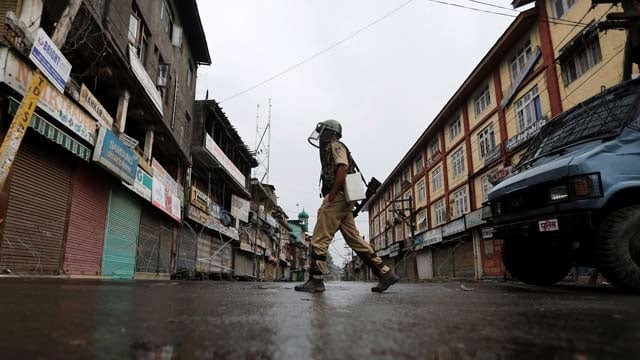
PHOTO: Reuters
False provocations over Kashmiri Pandits
On July 9, a day after Burhan’s killing, over 100,000 civilians managed to break the strict government-imposed curfew and reach his hometown Tral, in South Kashmir, to participate in his funeral procession. Widespread clashes between protesting civilians and security forces erupted across South Kashmir on the same day, which led to the deaths of at least 12 civilians on the day. Most media organisations deputed their reporters in Tral and adjoining areas, but the clashes largely happened in small villages and places far away from Tral. Stringers had no way to contact media as the government snapped private mobile networks across South Kashmir and all mobile internet services across the state. Suddenly a tweet started to gain impetus.
“I'm inside Kakran temple. We are surrounded by mob that is relentlessly attacking the temple with stones. No army or security cover is visible,” reads the tweet by Vinod Pandit, chairman of a ‘socio-religious’ group that claims to be working towards preserving religious and cultural heritage of Hindus in Kashmir. The tweet has been re-tweeted over 700 times. The Kakran temple is in district Kulgam in South Kashmir and was reopened in 2012 after 22 years. Kulgam saw violent agitation on July 9. However, a question that remains unanswered is how was Vinod able to tweet from inside the temple when mobile internet services were suspended across Kashmir. Vinod later claimed to have been evacuated by security forces at night.
PM seeks UN's help in provision of medical assistance for Kashmir unrest victims
When the incident sparked controversy over how Vinod tweeted from inside the temple, he stated, “If as per police I was tweeting from outside state, how did J&K Police rescue me from the temple along with some families?” In another tweet, he challenged the government to prove that there was no stone-pelting outside the temple. “We have proof to prove them wrong,” stated Vinod. However, he never came out with any proof. Reports later said the police was thinking of filing a First Investigation Report (FIR) against Vinod for spreading ‘venom’ on social media, but it was never filed.
However, police filed a case against another person, Ashok Koul, who in a Facebook post stated two Kashmiri Pandits (Hindus) were killed in a Kashmir village. “According to sources two Pandits killed in Kashmir in some village… Many Hindu Houses Burnt… Internet Services Suspended.” Since this was baseless, Koul was booked under law. However, he later apologised and agreed to have shared a rumour passed on by a friend. If the police would not have taken fast action, the widely shared text could have led to communal riots. Upon being asked about the status of the case, a police officer at Kothibagh police station in Srinagar, on August 2, said, “We have asked the crime branch to find out about the person behind the case.” The officer, however, refused to have filed any case against anyone other than Koul.
Meanwhile, Vinod has been leading a protest by Pandits employed in Kashmir valley under Prime Minister’s package for Kashmiri Pandit migrants. The protest has been ongoing for two weeks, mainly in Jammu city and was also staged at Jantar Mantar in New Delhi. The protesting employees demand their posting to Jammu region, saying they were under attack in the valley. They alleged that stone-pelters in Pulwama and Anantnag districts attacked the transit camps they reside in. However, police has refuted any such claim, saying there was no incident of stone-pelting on any Pandit transit camp. Deputy Inspector General of Police for South Kashmir range, Ghulam Hassan Bhat, was quoted by a Srinagar-based news agency as saying, “In such situations, people generally have apprehensions about their security. So too are Pandits. But people in Kashmir know that Pandits are from our community, and they don’t harass them in such situations.” Similarly, Senior Superintendents of Police in district Baramulla, Kupwara and Budgam said there was no stone-pelting incident on any Pandit camp in their respective areas.
Even though there was no proven attack on Hindus during the ongoing unrest, the Minister of State in the Prime Minister’s Office, Jitendra Singh, on July 10 said, “I reassure members of Kashmiri Pandit community that they are safe. There were some incidents of stone-pelting (earlier).” Indian Home Minister Rajnath Singh also publically asked the Chief Minister of Jammu and Kashmir, Mehbooba Mufti, to ensure safety of the Hindu community.
Speaking about the allegations, independent legislator from Langate assembly constituency of North Kashmir, Er Abdul Rasheed, on July 30 said the police had been denying “even a minor incident” where any Kashmiri Pandit, Amarnath Yatri or a non-Muslim had allegedly faced any inconvenience. “[Pandits] left no stone unturned to defame Kashmiris by levelling false allegations and accusing Kashmiris of attacking their camps in the valley,” the legislator said. He said the Pandits had “lost the right to be called Kashmiris as their every act is misleading, communal and anti-Kashmiri.” The legislator, however, blamed “vested elements” for provoking these employees.
India summons Pakistan's High Commissioner over 'terrorism in Kashmir'
The most recent attempt to apparently provoke aggression among members of the Pandit community occurred on August 5. Activist and film-maker Ashoke Pandit shared an image of a computer-typed poster, allegedly found pasted on a wall near a Pandit residential camp in Hawl Pulwama, directing the Pandits to “leave” Kashmir “or face death”. The poster bore the name of a little-known rebel group Lashkar-e-Islam, which was in news earlier this year over attacks on telecom towers, an act widely condemned by other rebel groups and the separatist leadership. The police in June claimed to have killed the head of Lashkar-e-Islam in an encounter, saying he had set up the new group as an offshoot of Hizbul Mujahideen, a Kashmiri armed rebel group.
Meanwhile, Hizbul Mujahideen on August 8, a day after the incident, distanced the armed struggle of Kashmir from threats or attacks on the Pandit community. “Indian Security Agencies are trying to give a communal colour to the ongoing Kashmir freedom struggle and for this purpose these agencies have come up with the fake posters threatening Kashmiri Pandits living in Kashmir,” a Srinagar-based news agency quoted Hizb spokesperson Salim Hashmi as saying on behalf of deputy commander Saifullah Khalid. The armed group said there was no group by the name of Lashkar-e-Islam. “The militants who are up in arms against India can’t think of threatening Kashmiri Pandits,” the spokesperson said.
Appearance of the poster in Pulwama was hence a mystery. Head of the concerned police station said investigators found no such poster near the camp. Pertinently, Superintendent of Police, Pulwama, Rayees Mohammad Bhat, earlier told Hindustan Times it could have been an attempt by “miscreants” to create fear among the minority community. “It (Lashkar-e-Islam) is a Sopore-based group and has no presence in South Kashmir. They have no cadre here (in Pulwama),” he said.
Allegations of an attack on Kashmiri Pandits were also levelled only a month back, on June 12, when news reports claimed an unruly mob of stone-pelters attacked a bus headed to revered Mata Kheer Bhawani shrine carrying Kashmiri Pandit women. Two women were injured in the incident. Chief Minister Mehbooba Mufti later ruled out the allegations of a target attack and said a group of civilians was pelting stones at a newly established police post when the bus passed by. “While some 80 vehicles carrying pilgrims had already passed through the area, unfortunately one vehicle crossed over the same time when some miscreants were pelting stones at a newly established Police Post at Wanpoh,” she said. In fact, the Muslim community had helped the Hindus in organising the annual fair at the shrine, keeping up with an age-old practice of communal harmony in the region. This is on record and reported by the Indian media as well.
Amid attempts to create communal tension in Kashmir valley, one of the most prominent actors in India, Anupam Kher, shared a visually disturbing image of murdered Kashmiri Pandits on Twitter. “Here is pic of butchered bodies of Kashmiri Pandits killed by terrorists. No outrage or concern by Pseudo liberals!” he wrote. The image was apparently from the Wandhama massacre of 1998. Kher, known for his firm stand in favour of the rights of Kashmiri Pandits, was widely criticised on social media for sharing the disturbing image that could spark communal violence.
Annual Amarnath Yatra: Bogus threats continue
The government suspended ongoing Hindu pilgrimage to Amarnath Cave about 130 kilometres south of Srinagar on July 9. The pilgrimage later resumed and over 12,000 pilgrims paid obeisance at the Amarnath cave peacefully. Pertinently, 30 people, including Amarnath pilgrims and local workers, were killed in a suicide attack in Pahalgam town in year 2000. However, this year, it would have been hard for people wanting to perform the pilgrimage as the Border Security Force (BSF) in early June announced that armed rebels were planning to attack the Amarnath Yatra. But, slain militant commander Burhan Wani, in his last video released on social media on June 7, refuted the claim. We have no plans to attack pilgrims who arrive in Kashmir for Amarnath Yatra, the most wanted rebel commander said. “They perform their religious rituals here and we have nothing to do with that,” Burhan had said. He repeatedly termed the armed insurgency a movement for freedom against Indian rule. “The land of Kashmir is ours (Kashmiris) and only we have right over it,” he had said.
The attempts made by unknown people to threaten pilgrims continued. On July 29, some unknown people on a motorbike made rounds in curfew-bound Anantnag district and distributed pamphlets against the Amarnath pilgrims and tourists visiting Kashmir. The pamphlets were attributed to Tehreek-e-Hurriyat group, led by senior separatist leader Syed Ali Geelani. The next day, Geelani issued a statement to media distancing himself and his party from the pamphlets. He said it was a “wicked conspiracy” of the government to “defame the freedom struggle.” Geelani said his party wants more tourists to visit Kashmir so that they observe the ground realities themselves instead of relying on information provided by the Indian media.
On August 6, the website of a leading Indian television news channel reported that locals pelted stones on non-Kashmiri students of National Institute of Technology (NIT), Srinagar, on their way to Srinagar airport. The police later issued a press release refuting the report. “The story is bereft of facts, frivolous and concocted. There has been no incident of stone-pelting in NIT Srinagar campus or on the students,” the statement read.
Meanwhile, news spread on mainstream and social media on July 13, this time confirmed by the government as being factual, that Muslim residents of South Kashmir’s Bijbehara town defied curfew to rescue a group of Amarnath pilgrims injured in a road accident on Srinagar-Jammu national highway and rushed them to a nearby hospital. The driver and a pilgrim died while 20 others were injured in the accident. Similarly, amid shutdown and curfew on July 16, Muslim neighbours took part in the last rites of an elderly Hindu woman in Maharajgunj area in Srinagar.
Kashmir’s fault lines
Since the Partition, conflict dynamics in Kashmir valley have kept changing from political diplomacy to peaceful coexistence, from peace-accords to separatist movements, and from electoral contests to armed struggle. Although Kashmir houses a majority of Muslims with pro-Islamic sentiments, making people more affectionate towards Pakistan, it does not imply the Muslim population here is against other religions.
Pakistan offers aid for injured Kashmiris
Since the dispute started in 1947, the most prominent incident in Kashmir, which many equate to communal hatred, has been the mass migration of Kashmir’s Hindu community, popularly known as Kashmiri Pandits, in early 1990s. As the armed insurgency gained momentum in Kashmir, Pandits, whose positive contribution to Kashmir is well documented, left the valley en-mass, leaving behind their properties.
Armed rebel groups have mostly targeted Indian security establishments in Kashmir valley, but they have also attacked unarmed civilians multiple times, including those belonging to Kashmir’s Hindu community. According to government statistics, armed rebels have killed over 16,000 unarmed civilians, with 219 of them being members of the Hindu community. However, some activists of the Pandit community refer to the killings as “genocide” and the community’s mass migration from Kashmir as “ethnic cleansing”. Separatist leaders of Kashmir have repeatedly condemned the migration and demanded the community’s dignified return. For instance, on July 6, 2014, senior separatist leader Muhammad Yasin Malik said, “It is the wish and desire of every Kashmiri to see our Pandit brothers, sisters, youth and children back in their homes and localities and no ruler or nation can stop them from returning back or impose his will and decision on them in this regard.” Malik was an armed rebel at the time of Pandit migration and his group Jammu Kashmir Liberation Front (JKLF) is among those widely blamed for “forcing” and “threatening” the community to evade Kashmir.
Rebel attacks on unarmed Pandits are recorded in the history of Kashmir’s armed insurgency movement that started in the late 1980s. This includes Wandhama massacre of 1998 when 23 members of the Hindu community were killed in the small town near district Ganderbal in Central Kashmir. The Hindu community left Kashmir en mass in the early 1990s. Recorded history suggests that armed rebel group Harkat-ul-Mujahideen publicised a poster in leading local Urdu-language newspapers – Aftab and AlSafa – asking the Pandit community to leave Kashmir. This was followed by announcements through mosque loudspeakers allegedly asking Hindus to leave Kashmir or convert to Islam. However, separatist groups, including Hurriyat Conference and United Jihad Council, led by Pakistan-based Syed Salahuddin, have related the Pandit exodus to infamous Jagmohan conspiracy theory. According to the conspiracy theory, Jagmohan, the then governor of Jammu and Kashmir, conspired to make Pandits leave Kashmir so that Muslims of Kashmir could be “brutally crushed” and the freedom movement could be presented to the world community as a “communal” one.
Kashmir belongs to its people
Meanwhile, when the government’s plan to establish separate townships in Kashmir for returning migrants came into public forum in 2014, Salahuddin openly opposed the plan, but welcomed the migrants at places they were originally based at. “The State of Jammu and Kashmir has always displayed unprecedented communal harmony. We will never allow the Delhi regime to divide our social fabric on communal lines. We welcome our Hindu migrants who unfortunately migrated because of Jagmohan’s plans. We welcome their return but they should settle in their native villages and their own homes.”
Moreover, Burhan, in his last video statement, said the rebels would not object to the Pandits returning to their homeland and settling back in the places they left behind. The rebel commander said his group, however, objects to the creation of separate colonies for Pandits. In fact, Burhan’s group and unarmed separatist leaders of Kashmir have termed the proposal to set up separate townships for Pandits as a plan similar to Israel’s policy on Palestine.
Vijdan Mohammad Kawoosa is a Kashmir-based journalist and founder/editor of news website jandknow.com

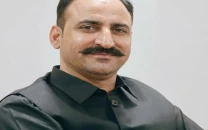
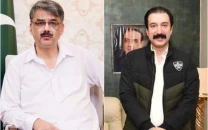
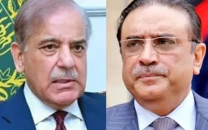

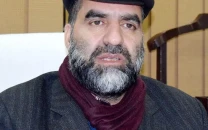
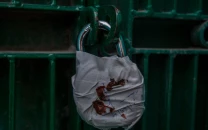












COMMENTS
Comments are moderated and generally will be posted if they are on-topic and not abusive.
For more information, please see our Comments FAQ